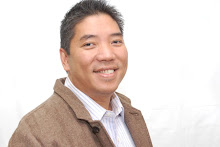By Ambeth Ocampo
Philippine Daily Inquirer
First Posted 02:09:00 10/15/2008
Ten years ago, I visited the National Bureau of Investigation (NBI) Medico Legal Office on Taft Avenue in Manila to seek expert opinion on an autopsy undertaken on bones excavated in Cavite province that were being passed on as the remains of Andres Bonifacio, who was executed with his brother somewhere in the Maragondon mountain range in 1897. My research was done long before forensics grew into something that attracts public interest because of the popular “C.S.I.” TV series.
Nothing came of that research because the bones disappeared before the war and have not surfaced since. I think those bones were not Bonifacio’s and they would not have withstood closer scrutiny. All we have left are photographs and an autopsy report by Dr. Sixto de los Angeles and a certain Dr. Cuajunco as leads.
I didn’t realize, until I sat beside Dr. Romel Papa on a flight to Singapore, that the NBI actually has a neuropsychiatric service that undertakes psychiatric forensics. It seems the NBI is worth a future visit because we can probably use forensic psychiatry on our heroes and history. While Papa is more engaged in drug abuse rehabilitation, he listened with interest to my research and I told him that perhaps they could help me in some historical research.
When Jose Rizal made his first trip abroad in 1882, he spent three days in Singapore on a stopover. In his diary, he wrote on his second day in Singapore: “I left the Philippines exactly one week ago today, and I’m already in a foreign country.” Today you take a plane ride for two hours and you can be in a foreign land.
Reading Rizal’s travel diaries in the context of modern air travel can be very engaging as we can compare and contrast travel in his time and ours. What is significant is that Rizal recorded this nightmare in his diary:
“I’ve had a sad and frightful dream with all the appearance of reality. I dreamed that while in Singapore, my brother had died suddenly, and I told my old mother, who was traveling with me in the same boat, about it. The dream was confirmed by Sor Catalina and then I had to return, leaving everything in this country. Why did I have that dream? I’m thinking of cabling my hometown to find out the truth, but I’m not superstitious. I left my brother strong and robust. May God will that it might not happen thus!”?
What is even more interesting is that this was not the first time Rizal had precognitive or prophetic dreams. He continued: “It is true that I had a dream once that was fulfilled. Before the examination for the first year in medicine, I dreamed that I was asked certain questions but I didn’t mind them. When the examinations came, I was asked the questions in my dream.”
When we are told in school that Rizal had very high grades and that he maintained an academic average at the top of his class, you should remember that he could foresee exam questions before he took tests. Was he lucky or cheating? Maybe he should have spent more time dreaming about lotto numbers so that the outcome would have been more useful. We know that he won second prize in lotto while he was in exile in Dapitan, which was why he was able to buy over 30 hectares of prime beach-front property there.
Perhaps we should not only look at dreams. Even in the mundane diary entries that a historian takes at face value, a forensic psychiatrist might see something else of value. When Rizal described what he saw on the second day in Singapore, was he just giving us a narrative of what he saw and experienced, or can we find deeper meanings there?
For example, he wrote: “The first that I saw were two beautiful houses of Chinese in European style, surrounded by walls and trees. I made the carriage stop in front of a Chinese building decorated with dragons and paintings. I entered. I was equipped by Goinda with some English words. With these, I entered a kind of small garden among columns and pedestals. Numerous beautiful plants and a variety of flowers, planted with symmetry and order; cages at the two extremes; in one of them were pheasants, a kind of turkey, and other birds beside; in the other, spotted deer and peacocks. I came out and got into the carriage to continue my tour.” What Rizal saw and what he ignored might mean something. What did he record in his diaries, and what did he leave out? What do this reveal? Could we find a psychological clue in Chulalalngkorn’s elephant?
Rizal wrote: “I visited also a large school for Chinese, Malays, Indians and Englishmen. It is a magnificent building and there are many students. The palace of the Rajah of Siam is also notable and has a small iron elephant and whatnot on the pedestal placed in front of the building.”
The bronze elephant was given to Singapore by Thai King Chulalangkorn in gratitude for the hospitality extended to him during his 1871 visit. The statue was moved from the place where Rizal saw it and is now in front of the Old Parliament, now known as Arts House. On my last trip to Singapore, I looked for Chulalangkorn’s elephant and finding it, I stood in front of it with the knowledge that Rizal had gazed upon it too over a century earlier.
We are lucky to have a world traveling National Hero, because when you visit a foreign country he visited, you see it with his eyes as well as your own.
* * *
Comments are welcome at aocampo@ateneo.edu.
Tuesday, October 14, 2008
Subscribe to:
Post Comments (Atom)

No comments:
Post a Comment